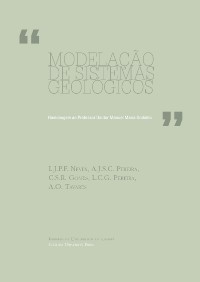Please use this identifier to cite or link to this item:
https://hdl.handle.net/10316.2/36293| Title: | Geotectónica e granitos portugueses: o pioneirismo dos anos 40 | Authors: | Andrade, António Soares de Pinto, Manuel Serrano |
Keywords: | Geology;Geotectonics;Iberia;Pioneering forties;Geologia;Geotectónica;Península Ibérica;Anos 40 | Issue Date: | 2011 | Publisher: | Imprensa da Universidade de Coimbra Laboratório de Radioactividade Natural da Universidade de Coimbra |
Journal: | http://hdl.handle.net/10316.2/36282 | Abstract: | Knowledge of the geology of Portugal received in the 1940s a strong impulse of renovation
due mainly to the enthusiasm of two young geologists, Carlos Teixeira and Cotelo Neiva,
both working at the Oporto University under the guidance of J. Carrington da Costa. The
geological age of the granites occurring in northern and central Portugal was the theme of
an interesting controversy between Neiva, a petrologist, and Teixeira, a stratigrapher.
Unfortunately the lack of detailed geological maps of such areas did not allow them to do
much more than presenting reasonable doubts and cute conjectures. In the same decade but
in Spain the German geologists W. Carlé and P. Schmidt-Thomé, based on good mapping,
succeeded in establishing a chronological sequence of three groups of Hercynian granites:
new, old and older ones. But for that effect they used different criteria and so such names
do not mean the same thing. Still in the 1940s two notable geotectonic essays were published, one by the well known F. Lotze and the other by the practically unknown (still
today) A. Schneider, the former of the fixist type (hercynotype) and the latter of the mobilist
type (alpinotype). Both are pioneering studies that, each in its own way, allowed for a
better understanding of the role of granites during the Hercynian orogeny in the Iberian
Peninsula. A década de 1940 marca o início de uma renovação da Geologia portuguesa, graças sobretudo ao entusiasmo de dois jovens geólogos da Universidade do Porto, Carlos Teixeira e Cotelo Neiva, e à experiência do seu Mestre comum, J. Carríngton da Costa. O posicionamento geológico dos granitos do centro e norte de Portugal é então objecto de uma interessante controvérsia entre o petrólogo Cotelo Neiva e o estratígrafo Carlos Teixeira; mas a falta de uma detalhada cartografia geológica pouco mais permite do que legítimas dúvidas e perspicazes conjecturas. É também na década de 40 que, na vizinha Espanha, e já com bom suporte cartográfico, os alemães W. Carlé e P. Schmidt-Thomé conseguem seriar cronologicamente 3 grupos de granitos hercínicos: novos, velhos e mais velhos. Mas são diferentes os critérios que utilizam; de modo que aqueles nomes não designam exactamente as mesmas coisas. É ainda na década de 40 que surgem, de modo independente, dois notáveis ensaios geotectónicos, um mais fixista (“hercinotípico”) e bem conhecido (F. Lotze), o outro mais mobilista (“alpinotípico”) e ainda hoje praticamente desconhecido (A. Schneider). Ambos são pioneiros e permitem, cada um à sua maneira, entender melhor a lógica dos granitos na orogenia varisca da Península Ibérica. |
URI: | https://hdl.handle.net/10316.2/36293 | ISBN: | 978-989-97106-0-3 978-989-26-1009-2 (PDF) |
DOI: | 10.14195/978-989-26-1009-2_6 | Rights: | open access |
| Appears in Collections: | Modelação de sistemas geológicos: livro de homenagem ao Professor Manuel Maria Godinho |
Files in This Item:
| File | Description | Size | Format | |
|---|---|---|---|---|
| geotectonica_e_granitos_portugueses.pdf | 4.54 MB | Adobe PDF |  |
Items in DSpace are protected by copyright, with all rights reserved, unless otherwise indicated.
